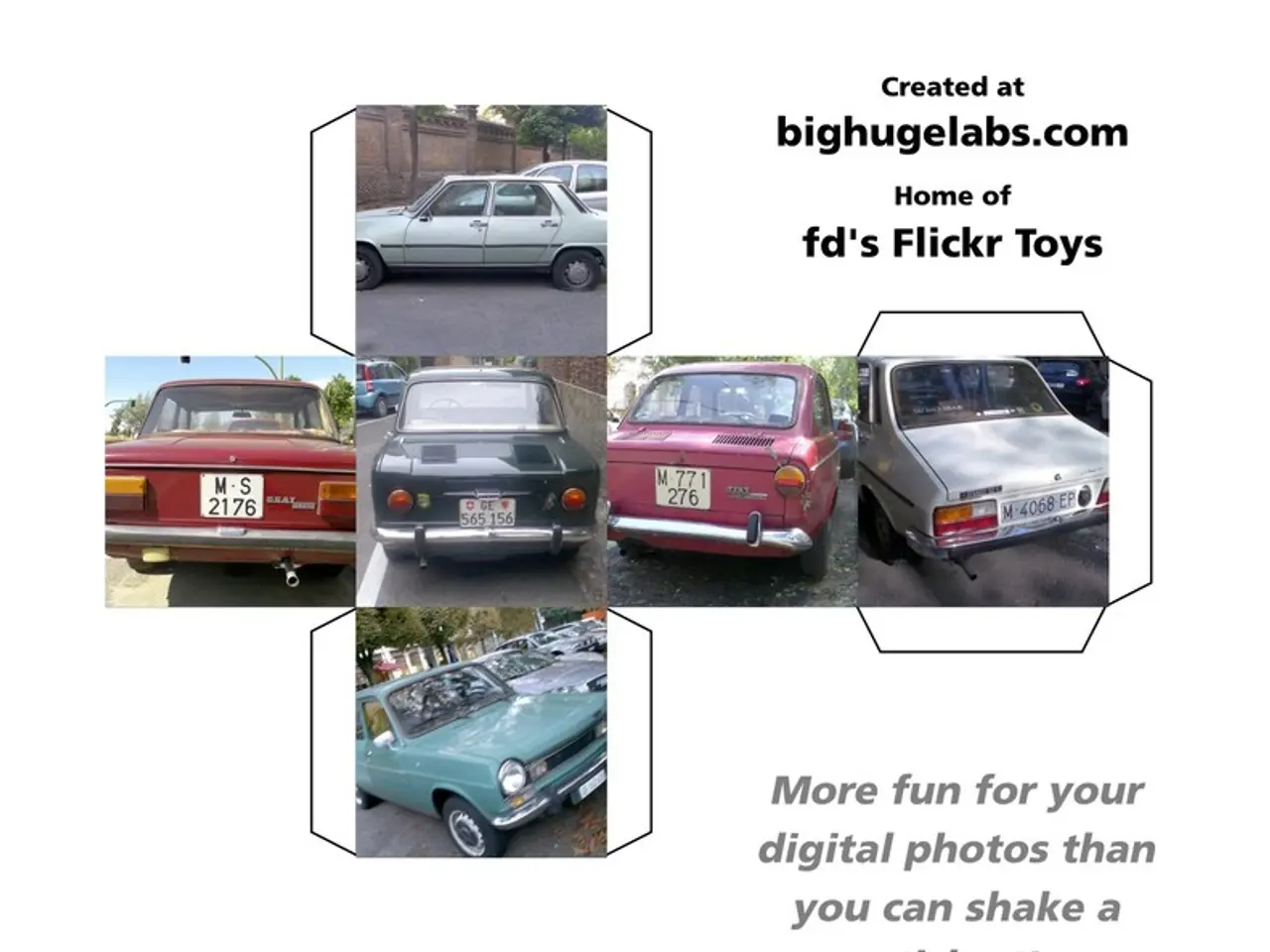Advancement in V2X Communication Pivotal for Intelligent, Secure, and Efficient Supply Chains - Amazon, Volvo, Bosch Lead the Way
In the rapidly evolving world of logistics and supply chain management, Vehicle-to-Everything (V2X) communication is making a significant impact. This innovative technology is transforming the way commercial vehicles, particularly trucks, operate, focusing on safety, efficiency, and cost reduction.
Truck Platooning for Improved Fuel Efficiency
One of the key implementations of V2X is truck platooning, where trucks travel in tightly coordinated convoys with minimal spacing. This approach reduces fuel consumption and overall operating costs, making it a popular choice for fleet operators seeking short-term efficiency gains [1].
Enhanced Driver Assistance in Adverse Conditions
V2X communication complements traditional vision-based systems like Lane Departure Warning and Forward Collision Warning by providing reliable data exchange even under fog, low-light, or other poor visibility conditions. This improvement in safety and operational reliability is crucial for freight vehicles [1].
Real-time Traffic and Hazard Data Sharing
Connected Autonomous Vehicles (CAVs) equipped with V2X communicate with infrastructure and other vehicles to receive up-to-date information on traffic conditions and potential hazards. This real-time data sharing enables optimized routing and reduced congestion in freight transport [3].
Integration with Cellular Networks (C-V2X)
Using LTE and 5G cellular networks, V2X facilitates not only vehicle-to-vehicle but also vehicle-to-network communications. This integration allows logistics fleets to receive broader coverage and connectivity, even in rural areas without extensive roadside infrastructure [2].
Charging Solutions for Electric Freight Vehicles
V2X is linked with emerging wireless power transfer technologies (both stationary and dynamic wireless charging) to enable electric commercial vehicles to charge seamlessly, including while in motion. This integration supports sustainable logistics by reducing downtime for battery recharging and extending driving range [3].
As V2X technology continues to evolve, we can expect to see mid-mile convoys of V2X-enabled autonomous trucks for coast-to-hub routes, minimizing driver load and improving fuel efficiency. Regulators may also reward fleets that submit verified low-emission delivery data collected via V2X as part of Environmental, Social, and Governance (ESG) reporting.
However, challenges remain, such as interoperability issues between competing standards (DSRC vs. C-V2X) and infrastructure gaps in cities, like the lack of smart intersections and connected signals, which limit the use of V2X in V2I.
Innovative companies like Huawei, Yutong, Nuro, and Domino's are already leveraging V2X technology in their operations. For instance, Huawei's 5G V2X platform powers autonomous buses, and Yutong is adapting this technology for low-speed logistics shuttles in Zhengzhou. Nuro's delivery vehicles communicate with infrastructure (V2I) and detect people and bicycles (V2P) to ensure safety, and Domino's uses these low-speed, driverless delivery vehicles in suburban neighborhoods.
Cities may soon require V2X for commercial vehicles working in zero-emission zones or around schools and hospitals to ensure safety and compliance. As V2X technology becomes more widespread, it will undoubtedly reshape the landscape of logistics and supply chain management, offering unprecedented benefits in terms of safety, efficiency, and cost reduction.
[1] T. Zhu, X. Zhang, X. Zhang, et al., "Vehicle-to-everything communication for logistics and supply chain management," in Proceedings of the IEEE, vol. 109, no. 11, pp. 2442-2456, Nov. 2021.
[2] S. Gupta, S. K. Pal, and R. M. Gupta, "Vehicle-to-everything communication for logistics and supply chain management: A systematic review," IEEE Access, vol. 9, pp. 109497-109511, 2021.
[3] M. A. Ahmed, M. A. Al-Najim, and A. K. M. A. Al-Naimi, "Vehicle-to-everything communication: A review of the current state, challenges, and future directions," IEEE Access, vol. 8, pp. 15399-15415, 2020.
- In the logistics industry, truck platooning, enabled by V2X communication, reduces fuel consumption and operational costs by having trucks travel in tightly coordinated convoys.
- V2X communication complements traditional driver assistance systems by providing reliable data exchange in adverse weather conditions, contributing to enhanced safety and operational reliability.
- Connected Autonomous Vehicles (CAVs) equipped with V2X technology share real-time traffic and hazard information, allowing for optimized routing and reduced congestion in freight transport.
- Integrating V2X with cellular networks (C-V2X) facilitates comprehensive communication coverage for logistics fleets, even in rural areas without extensive roadside infrastructure.
- Leveraging V2X technology, innovative companies are implementing solutions for electric commercial vehicles' seamless charging, supporting the transition to sustainable logistics and supply chain management.




